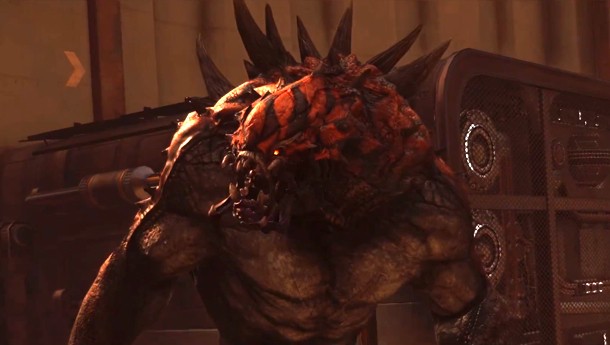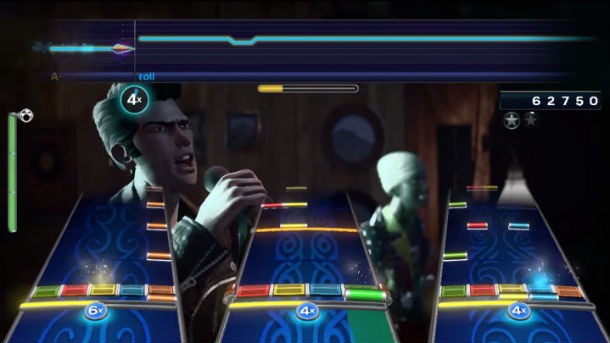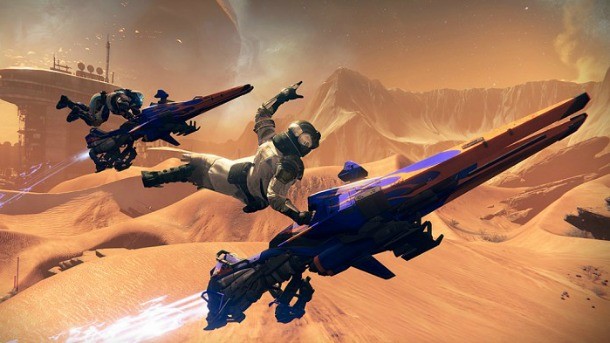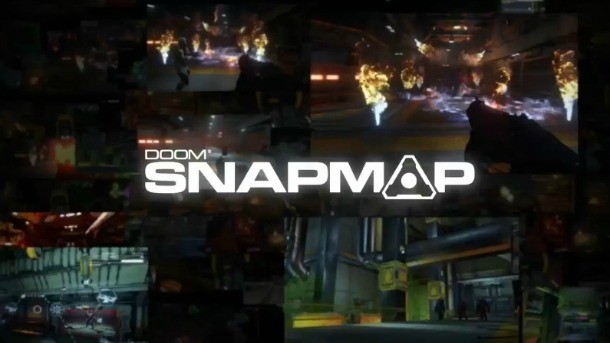The Gaming Trends Of 2015

Each December, we take a moment to look back at the news and headlines that defined the year. The video game industry has been in a state of massive transition for years. This latest period has been marked by a console hardware transition, the birth of virtual reality, and a fundamental change in how publishers view their relationships with customers.
That trend of experimentation and adjustment continued in 2015. Here are the major themes that defined the past 12 months.

Multiplayer-only full-priced games struggle
Looking back at the Xbox 360 and PlayStation 3 era, we often talked about “tacked on” or “bullet point” multiplayer. These pejoratives were thrown around any time a game shipped with a multiplayer mode that felt like it was given less time, funding, and effort.
While consumer behavior backs up attitudes about games with extraneous multiplayer offerings (as the success of BioShock Infinite, Deus Ex: Human Revolution, Sleeping Dogs, and Metro: Last Light indicate), the same can’t be said about the inverse. By all accounts, Evolve, Star Wars Battlefront, and Rainbow Six Siege offer compelling multiplayer without a forced single-player campaign.
The interesting element here is that when games like Battlefield 4 showed up with less than overwhelming story modes, some players suggested that the whole effort wasn’t necessary. When it came time to back those statements up with behavior, there was a disconnect, and it wasn't players' fault.
This year saw three games criticized by consumers for their lack of solo offerings. This builds upon last year’s reaction to Titanfall, which players lamented for its absence of single-player content.
In many of these cases, the issue isn't entirely that these are multiplayer-only games, but that the content included in these full-priced titles doesn't match up with value expectations. There is a reasonable belief that if a developer diverts the resources it might spend on single-player content to enhance the multiplayer offerings, that should be evidenced by more breadth of experiences as well as depth to hold attention. Games like Rainbow Six Siege and Star Wars Battlefront feel closer to free-to-play frameworks in retail clothing.
Will publishers revert to “bullet point” single-player modes to create an illusion of greater value? Or will they continue to funnel resources into multiplayer modes for games that fit that design profile?

Everything old is new again
We’ve been living in an “HD Remaster” culture since early in the last generation. This year saw an expansion of that practice, with even more “definitive editions” and the return of a number of dormant franchises.
The music genre has been reborn, and our living rooms are cluttered once more with plastic instruments. Shenmue 3 was successfully funded via Kickstarter. A new Homeworld game is coming in just a few weeks. Oh, and we’re finally getting that Final Fantasy VII remake fans have been pleading for.
We suppose the only question left is: Who do we need to ask for a new Legacy of Kain game? No, we aren’t counting Nosgoth, even if it is good.

Toys to Life continues to expand
After Nintendo entered the toys-to-life market, we were pretty convinced that store shelves and parents wallets had reached their limits. Imagine our surprise when Warner Bros. not only entered the crowded field, but did so masterfully.
We’re not sure who else might be considering a run at this multi-billion dollar segment, but it’s still growing. The bubble will burst at some point, just like it did for the plastic instrument music games, but there’s no indication that the crash is imminent.

Platform holders are glad to sell you old games on new consoles
All three major platform holders have now found a way to get you to buy old games on your new hardware. In addition to the PlayStation Now streaming service, Sony has started to re-release PlayStation 2 games on PlayStation 4.These aren’t the PS2 classics of last generation and you can’t use your discs. That means you have another chance to buy decade-old games.
Microsoft has incorporated backward compatibility on the Xbox One. Here, existing digital ownership and discs for supported games carry over. Monetization comes from new purchases of Xbox 360 games and additional motivation to purchase DLC for Games with Gold titles that bridge the generation gap.
Nintendo, a company that has often found ways to repackage older content for new systems, has done so again. For the sake of convenience, Wii U owners can now purchase some Wii titles to run natively on the new system. That means no more booting into the clunky and archaic Wii menu just to play your games.
Given the positive reaction to these moves on all three platforms, we don’t expect this trend to wind down any time soon. Even though we're more than two years into the console cycle and libraries are filling up with new games, publishers are going to keep repackaging the games you love.

The gaming industry takes major steps from goods-based industry to one more fully based on service
It used to be that you walked into a store, picked out your game, and went home to play it as-is. From the moment you took it out of the package to today, the experience of loading up a classic game was unchanged. With the advent of day-one patches, ongoing updates, micro-DLC, major add-ons, and back-end balancing, the landscape has changed. Today, publishers are moving away from sales as the only metric of success.
A consumer purchase no longer culminates a relationship that started with lead-up advertising. Publishers have been putting additional emphasis on player retention and monetization. We’ve seen this most prominently in Destiny, which underwent a major shift after the release of The Taken King. The game’s second year introduced microtransactions and moves away from what Bungie calls “monolithic” DLC. Instead, the developer will be adding events that also give players opportunities to spend more.
Microsoft, too, has shifted its approach. It’s hard to know how much its second-place role this generation led to the decision, but the company will no longer be reporting how many consoles it has shipped each quarter. Instead, it will be using engagement metrics, like Xbox Live usership, to communicate success.
We’ve also seen the beginnings of a shift away from player base-fracturing DLC models. While Call of Duty and Star Wars Battlefront are sticking with the map pack concept, Microsoft is making all Halo 5 maps free, monetizing the game with card packs. Rainbow Six Siege will also have free maps, with new characters the core DLC offering. These can be unlocked immediately for cash or, instead, by playing.
We’re curious to see how developers and publishers adapt their paid DLC models in light of free-to-play innovations and player retention goals.

Franchises redeemed
Last year had some blemishes, with players facing a steady flow of broken games. Driveclub, Assassin’s Creed Unity, and and Halo: The Master Chief Collection all launched with major problems. While there’s no comparison for Driveclub yet, we know that the Assassin’s Creed franchise suffered due to Unity’s technical problems. Both Ubisoft and Microsoft have reason to be relieved this year, though.
Assassin’s Creed Syndicate is technically sound and critically lauded. Halo 5: Guardians shot to the top of the NPD charts for October and has been performing well online and offline. These success were necessary for the long-term health of their respective brands.
Another major annual franchise saw a rebirth this year. Call of Duty has been in steady decline for a number of years. Treyarch’s magic touch has reinvigorated the series, with Black Ops III turning around year after year of flagging sales.
The lessons here are many. No franchise is too big to fail. No technical disaster comes without a price. And it’s rarely too late to right the ship. As we enter 2016, our eyes are going to be on Warner Bros. and its PC offerings. After the Batman: Arkham Knight disaster, the publisher needs to show it has fixed its quality issues.
BONUS: TRENDS BEGINNING TO FORM FOR 2016
This year also brought us a number of trends we're keeping an eye on for 2016. While these are both in their infancy, the foundation is laid for next year. Here's what we're seeing start to develop.

Third-party console exclusives make a comeback
While third-party console exclusives never disappeared entirely, they did grow more infrequent later in the Xbox 360/PlayStation 3 generation. At least for now, they are back in force.
Rise of the Tomb Raider was controversial for Square Enix’s agreement with Microsoft for timed exclusivity. Street Fighter V, Hideo Kojima’s next game, King of Fighter XIV, Ni no Kuni 2, Nier Automata, and Final Fantasy VII Remake are just some 2016 titles that are full or console exclusives on PlayStation 4 right now.
At the end of last generation, there was little on the software side beyond first-party games differentiating PS3 and Xbox 360. At least for now, that line is a bit bolder. We’ll see how that continues in 2016.

It’s a mod, mod world
Modding is finally coming to consoles, though it’s not going to be omnipresent. The concepts started last generation with Far Cry map-making and LittleBigPlanet are expanding thanks to more powerful hardware.
Bethesda is bringing Fallout 4 mods to console, an enormous step to extending the game’s longevity. The publisher is also supporting id’s SnapMap feature for Doom, giving players to create new maps and share them with the community.
Nintendo pushed into this area in its own way this year, as Super Mario Maker caught on in a big way. And next year, we have more to look forward to with Media Molecule’s brand new Dreams game that allows players to collaboratively sculpt and design fantastical worlds.
We won’t see the same flexibility that PC players enjoy (just take a look at Steam Workshop for the potential), but enhancing player engagement through creation and sharing tools is clearly a trend that is underway and will see realization in 2016.

Get the Game Informer Print Edition!
Explore your favorite games in premium print format, delivered to your door.
- 10 issues per year
- Only $4.80 per issue
- Full digital magazine archive access
- Since 1991









